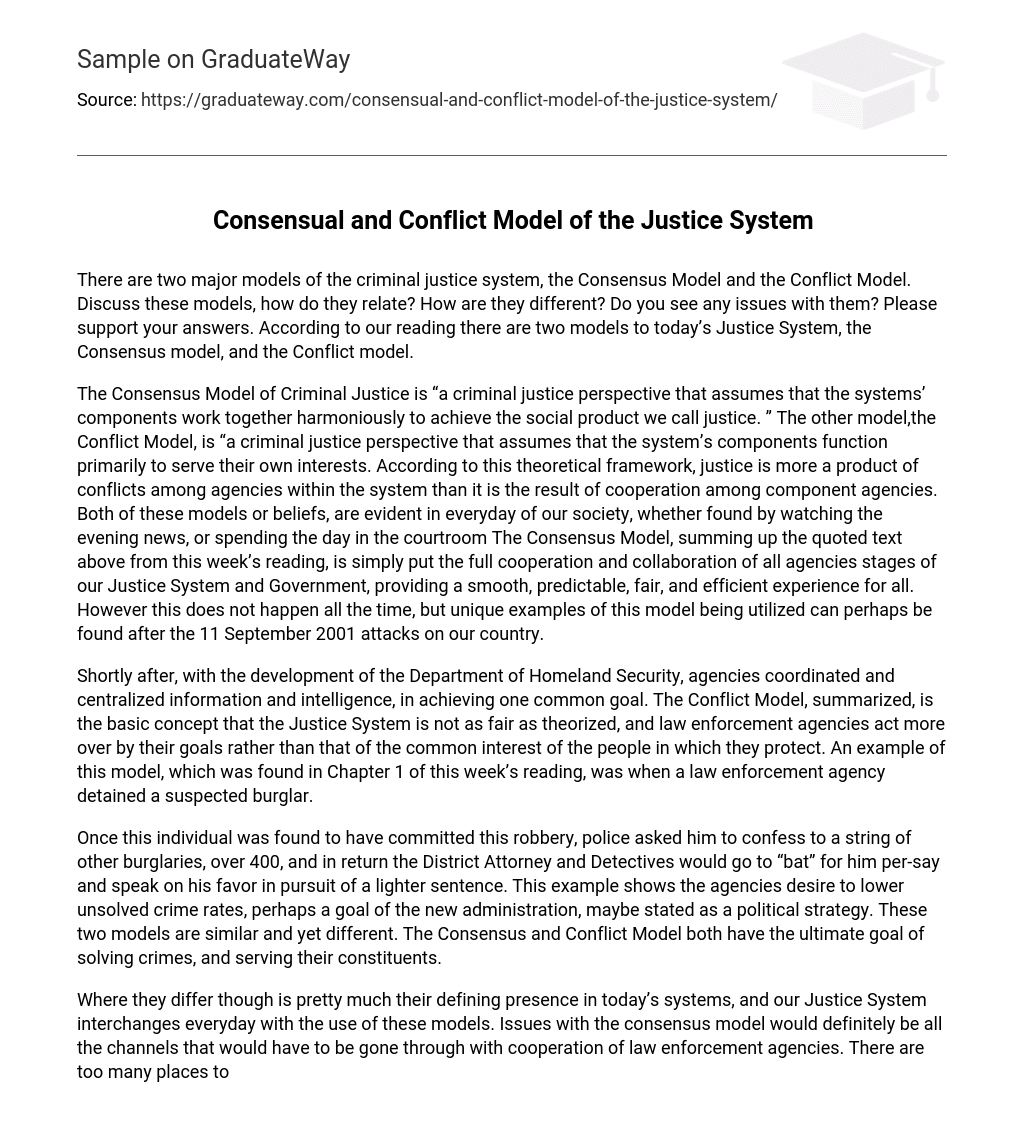The criminal justice system consists of two primary models: the Consensus Model and the Conflict Model. This discussion will examine the relationship between these models, their distinctions, and any potential problems they may pose. According to our reading materials, today’s Justice System incorporates both the Consensus model and the Conflict model.
The Consensus Model of Criminal Justice and the Conflict Model are two perspectives in criminal justice that have different assumptions about how the system operates. The Consensus Model assumes collaboration and harmony among all components to achieve justice, while the Conflict Model sees conflicts arising from self-serving interests within the system. These models can be observed in various situations, such as news coverage or court proceedings. The Consensus Model aims for cooperation and collaboration across agencies and stages of the Justice System and Government to ensure a fair and efficient experience. However, this ideal is not always realized, and there are unique examples of the Consensus Model that can be seen after the 9/11 attacks.
Following the establishment of the Department of Homeland Security, there have been efforts made to consolidate information and intelligence among agencies in order to achieve a common goal. The Conflict Model questions the fairness of the Justice System by suggesting that law enforcement agencies often prioritize their own objectives over protecting those they are meant to serve. Chapter 1 of this week’s reading provides an example that illustrates this model, recounting an incident where a law enforcement agency detained someone suspected of burglary.
When this person was discovered to have committed this robbery, law enforcement requested that he admit to a series of other burglaries, totaling over 400. In exchange, the District Attorney and Detectives promised to advocate for him, potentially leading to a reduced sentence. This case illustrates the agency’s aspiration to decrease the number of unresolved crimes, which could be seen as a political tactic or objective of the new administration. Both the Consensus and Conflict Model share the common objective of resolving crimes and serving their respective constituents.
The distinguishing factor between the consensus model and the conflict model lies in their significant presence in modern systems, particularly within our Justice System. These models are regularly utilised in the daily exchange of ideas in our justice system. However, the consensus model faces challenges due to the multitude of channels that law enforcement agencies must navigate with cooperation. The increased group size introduces numerous opportunities for mistakes. Conversely, the conflict model poses a major concern as it assumes and potentially prioritizes the goals of the agency over the individuals and the issues faced by the people they aim to protect on a daily basis.





